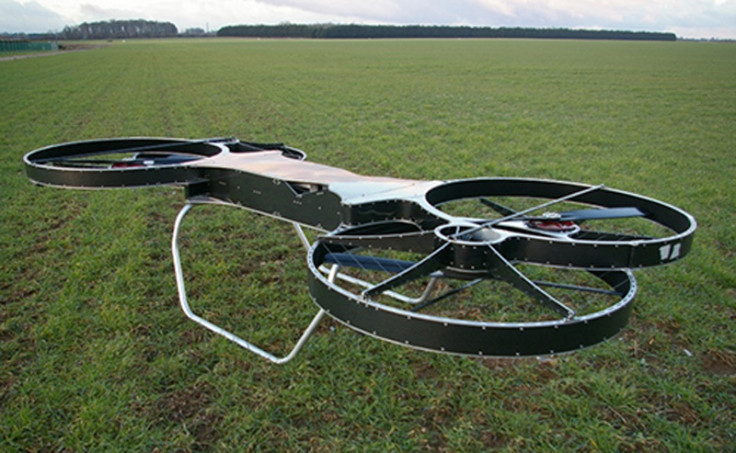Hoverbike: US Army and Malloy Aeronautics show off unmanned drone for carrying supplies to troops
US Army has teamed up with Malloy Aeronautics to develop a drone for carrying supplies to the front.
The US Army has demonstrated its latest prototype for a large quadcopter drone that is designed to aid the military by helping to deliver large amounts of supplies, munitions and equipment to the battlefield.
The "Hoverbike", also known as the "Joint Tactical Aerial Resupply Vehicle", is a rectangular-shaped unmanned aerial vehicle (UAV) developed in collaboration with British aerospace firm Malloy Aeronautics, systems integrator Survice, the US Marine Corps, the US Army Armament Research, Development and Engineering Center and the US Army Research Laboratory (ARL).
The drone features a large rectangular frame with four motors, as well as a long flat platform in the middle that a payload can be strapped to and strong metal landing gear to help the drone stay upright on landing.
No other information has been released about the drone's power capabilities, but in the future the researchers envision that the Hoverbike UAV will be able to carry payloads of up to 800 pounds while flying at speeds of 60 miles per hour over a distance of 78 miles.
"Anywhere on the battlefield, Soldiers can potentially get resupplied in less than 30 minutes," said Tim Vong, associate chief of ARL's Protection Division, likening the concept to "Amazon on the battlefield".
"We're also looking to integrate advanced intelligent navigation and mission planning. We're looking to end up with a modular, stable platform that can be used for even more dynamic and challenging missions," he continued.
The drone is part of the ARL's work into exploiting commercial unmanned aerial systems (UAS) technologies, with the goal of helping different army organisations to work together seamlessly, but it will still likely be a while before the drone is deployed for military purposes since the researchers need to expand how fast it can travel and how big a payload it can carry.
Whatever the name says, this is not a personal flight vehicle

The most interesting part of this story is the fact that Malloy Aeronautics is involved. From the name "Hoverbike", you might get the impression that the drone is some sort of personal flight vehicle, when it is really only an unmanned drone.
However, Malloy Aeronautics did originally set out to create a personal flight vehicle that would seat a single human pilot. Personal flight vehicles feature vertical take-off and landing (VTOL) technology and multiple independent inventors have been working in this field over the past few years.
Malloy Aeronautics launched the Hoverbike personal flight vehicle as a Kickstarter campaign in August 2014. Although the project exceeded its funding goal of £30,000 ($45,612, €41,771) and received financial backing of £64,000, the difficulty in making a personal flight vehicle work has seen Malloy Aeronautics release a one-third-scale drone called Drone3 to raise funds so it can continue to develop the full-sized Hoverbike.
The firm is notoriously secretive about its technology and for the most part, will not speak publicly about its work, but it seems that the Kickstarter earned it an important client as it began working with the US Army in 2014.
Malloy Aeronautics told IBTimes UK that the firm is still developing its products and that so far, it had had no formal orders requesting a manned Hoverbike that can be ridden by a human. It continues to collaborate with the US Army on the unmanned drone product to autonomously deliver aid and equipment.
© Copyright IBTimes 2025. All rights reserved.






















